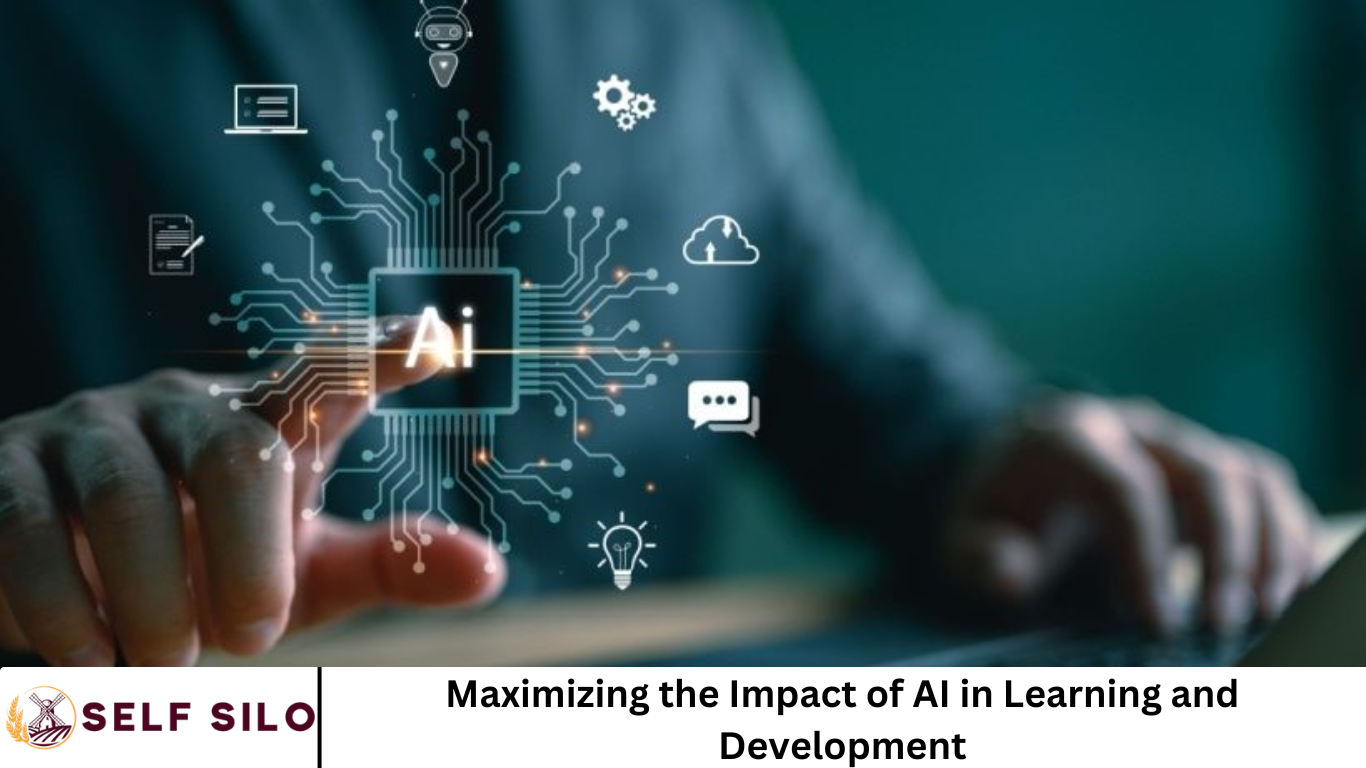Fast-paced digital world, organizations are under constant pressure to innovate and adapt. One of the most significant transformations in recent years has been the integration of Artificial Intelligence (AI) into Learning and Development (L&D).
As companies strive to upskill employees, enhance productivity, and foster continuous learning, AI presents an unprecedented opportunity to revolutionize how learning is designed, delivered, and measured.
This article explores how to maximize the impact of AI in learning and development, highlighting key strategies, benefits, and real-world applications.
More Read: How to Use an Instructional Design Framework: 5 Essential Steps for Online Course Success
Understanding the Role of AI in Learning and Development
AI encompasses technologies such as machine learning, natural language processing, and data analytics, which can automate, personalize, and optimize learning processes. In the L&D context, AI helps create adaptive learning environments that respond to individual learner needs, provide real-time feedback, and generate data-driven insights for informed decision-making.
Key components of AI in L&D include:
- Personalized Learning Paths: AI algorithms analyze learner data to deliver customized content.
- Chatbots and Virtual Assistants: These tools support learners by answering questions and providing guidance.
- Predictive Analytics: Helps identify skill gaps and predict future training needs.
- Content Curation: AI can automatically recommend or generate relevant learning materials.
Benefits of AI in Learning and Development
- Personalization at Scale AI enables truly personalized learning experiences by analyzing user behavior, preferences, and performance. This ensures that learners receive content suited to their needs, increasing engagement and knowledge retention.
- Improved Learning Outcomes AI-powered platforms provide immediate feedback, allowing learners to correct mistakes and reinforce understanding in real time. This accelerates the learning curve and leads to better outcomes.
- Data-Driven Decision Making L&D professionals can use AI-generated insights to refine programs, allocate resources effectively, and measure ROI. Analytics highlight what works and what needs improvement.
- Cost and Time Efficiency By automating administrative tasks such as grading, scheduling, and reporting, AI reduces the workload on trainers and speeds up training delivery.
- Accessibility and Inclusivity AI tools can adapt content for different learning styles, languages, and accessibility needs, making training more inclusive.
Strategies to Maximize AI Impact in L&D
To fully realize AI’s potential in learning and development, organizations must adopt a strategic approach:
- Define Clear Objectives Before implementing AI tools, set specific learning goals. Whether it’s improving onboarding, reducing training time, or boosting skill acquisition, having a clear vision ensures that AI initiatives align with business outcomes.
- Invest in the Right Technology Choose AI solutions that integrate with existing learning management systems (LMS) and offer scalability. Look for features such as natural language processing, adaptive learning, and robust analytics.
- Ensure Data Privacy and Ethics AI relies on vast amounts of data. Organizations must establish policies to protect learner privacy, ensure data accuracy, and address biases in algorithms.
- Train the Trainers L&D teams should be equipped to work with AI technologies. Providing upskilling opportunities for trainers ensures smooth adoption and effective use of AI tools.
- Measure and Iterate Continuously monitor AI implementation outcomes. Use data to make informed adjustments, optimize content delivery, and improve learner experiences.
Real-World Applications of AI in Learning and Development
- Corporate Training Programs Companies like IBM and Microsoft use AI to personalize corporate training. AI-driven platforms assess employee skills, recommend learning paths, and track progress, leading to more effective skill development.
- Onboarding and Orientation AI chatbots guide new hires through onboarding, answer FAQs, and provide resources tailored to the individual’s role and experience level.
- Performance Support Systems AI tools offer just-in-time learning support, delivering relevant content when employees need it most. This improves productivity and reduces reliance on formal training sessions.
- Learning Experience Platforms (LXP) LXPs like EdCast and Degreed leverage AI to curate personalized learning experiences from various content sources, including MOOCs, videos, and articles.
- Language and Soft Skills Training AI-powered apps such as Duolingo and Grammarly enhance language learning and communication skills through interactive, adaptive experiences.
Overcoming Challenges in AI-Driven L&D
While AI offers numerous benefits, it also presents challenges:
- Resistance to Change: Employees and trainers may be hesitant to adopt new technologies. Address this through change management strategies and communication.
- Data Quality Issues: Inaccurate or incomplete data can hinder AI effectiveness. Ensure data collection processes are robust.
- Technical Complexity: AI implementation requires technical expertise. Collaborate with IT and AI vendors for successful integration.
- Ethical Concerns: Be transparent about how AI is used, especially in assessments and performance tracking.
The Future of AI in Learning and Development
The future of AI in L&D is promising, with trends pointing toward even more intelligent and intuitive systems. Emerging innovations include:
- Emotion AI: Systems that detect learner emotions and adjust content delivery accordingly.
- AI-Generated Simulations: Realistic, scenario-based training powered by AI for hands-on learning.
- Voice and Gesture Recognition: Enhancing interactivity in virtual training environments.
- Blockchain for Credentialing: Ensuring secure, verifiable digital credentials for AI-based learning achievements.
Frequently Asked Question
What is the role of AI in learning and development?
AI enhances L&D by personalizing training content, automating administrative tasks, offering real-time feedback, and providing data-driven insights. This leads to more efficient, tailored, and impactful learning experiences.
How does AI personalize the learning experience?
AI uses learner data such as behavior, preferences, and performance to create adaptive learning paths. It recommends content suited to individual needs, improving engagement and knowledge retention.
What types of AI technologies are used in L&D?
Common AI tools include machine learning algorithms, chatbots, virtual assistants, natural language processing (NLP), predictive analytics, and AI-powered content curation engines.
What are the key benefits of using AI in training programs?
AI increases personalization, improves learning outcomes, reduces training costs, speeds up delivery, and enables more inclusive learning. It also helps L&D teams make data-informed decisions.
Are there risks associated with using AI in L&D?
Yes. Risks include data privacy concerns, potential bias in algorithms, over-reliance on technology, and resistance to change. These can be mitigated with strong governance, ethical frameworks, and transparent communication.
Can AI replace human trainers or instructors?
No, AI is meant to augment—not replace—human instructors. It automates repetitive tasks and delivers personalized content, while human trainers continue to provide mentorship, emotional support, and critical thinking guidance.
How can organizations start implementing AI in their L&D strategy?
Start by defining clear learning goals, choosing scalable and ethical AI tools, training L&D staff, and continuously evaluating performance using analytics. Begin with pilot programs before scaling across the organization.
Conclusion
Maximizing the impact of AI in learning and development requires more than just adopting new tools—it demands a strategic, data-driven approach aligned with organizational goals. By embracing AI, companies can create more personalized, efficient, and inclusive learning experiences that drive performance and foster a culture of continuous development. As technology continues to evolve, those who invest in AI-powered L&D today will be better positioned to thrive in the workforce of tomorrow.


